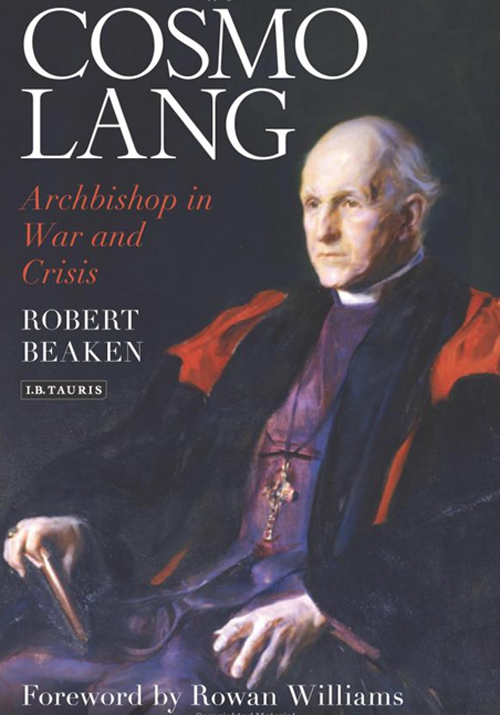Cosmo Lang: Archbishop in War and Crisis
Review

Cosmo Lang: Archbishop in War and Crisis, Robert Beaken, I.B. Taurus, 2012, hardback, 300 pp., £25.00, ISBN 9781780763552
Cosmo Lang's historical reputation as Archbishop of Canterbury from 1928-42, as his most recent successor Rowan Williams observes in an astute foreword to this new revisionist biography, has suffered not only from contemporary critics such as Hensley Henson, bishop of Durham and an unenthusiastic official biographer, but also from the considered, critical judgements of recent ecclesiastical historians, not least Adrian Hastings and Alan Wilkinson. In some key areas of continuing controversy surrounding Lang's personality and ministry it must be acknowledged that the evidence remains ambivalent and inconclusive, for example recurring insinuations about Lang's sexuality, where Robert Beaken's presumption of celibacy remains as plausible an interpretation of the extant documentary evidence as suggestions that his affectionate correspondence with his chaplains, for example, signified homo-eroticism. However, in at least one major respect new evidence unearthed by Beaken requires a major revision not only of ecclesiastical history but also of mainstream historical accounts of the abdication crisis of 1936, which constitutes one of three major crises together with revision of the prayer book and issues arising from the Second World War, which emerged during his primacy and which are reviewed in Beaken's illuminating biography. Utilising a more extensive range of primary sources than any hitherto made available, including Lang's private papers; previously restricted royal correspondence in the Royal Archives and even a private audience with the late Queen Elizabeth the Queen Mother, Beaken reveals that Lang can no longer be regarded as an ‘uninvolved bystander' during the abdication crisis which rocked the house of Windsor in 1936. Indeed, Archbishop Lang is revealed, for the first time in this biography, as the catalyst, explicitly insisting throughout the crisis that the king, Edward VIII, should relinquish the throne not only on moral or ethical grounds if he married a woman twice divorced whose husbands were still living but also because of the king's evident indifference towards his constitutional and religious duties. Beaken thereby exonerates such conventionally perceived prime movers as Stanley Baldwin, the prime minister and Geoffrey Dawson, the editor of The Times, and even the principal clerical scapegoat, the hapless Bishop Alfred Blunt of Bradford, who for over seven decades has borne the brunt of criticism for his unsolicited and unintentional role in the denouement of the crisis, by revealing that Lang as much as Baldwin or Dawson set the timetable and shaped the outcome of events. The biography is concerned with other aspects of Lang's primacy both before and after this pivotal constitutional crisis where it is argued that Lang not only piloted the Church of England through the challenges of inter-war depression and wartime emergency but also in the two preceding decades as one of the youngest Archbishops of York sub-divided the vast archiepiscopal see of York to create the new dioceses of Sheffield, Bradford and Blackburn and became the first archbishop to go down a coal mine. Moreover, ecumenically, whilst remaining unyielding in his support for the historic episcopate, he generally encouraged reconciliation with nonconformists who were suffering numerical decline and social influence throughout his episcopacy, but declined to allow them participation in the 1937 Coronation on ecclesiological grounds. As Rowan Williams, who has also faced challenges to his leadership of the Anglican communion during his much shorter primacy, avers in his foreword, this biography goes some way to restoring Lang's battered historical reputation recognising his qualities as a gifted devotional writer, his warm friendships with women as well as men and his ‘thoughtful and courageous' leadership of the church during wartime. Beaken relates that Lang's last official duty was the confirmation of the young Princess Elizabeth, later Queen Elizabeth II, who became one of the most steadfastly devout monarchs to occupy the British throne and it would be interesting to know whether she shared her mother's admiration and affection revealed in this groundbreaking study for the prelate, who played such an instrumental role in changing the course of both of their lives.

